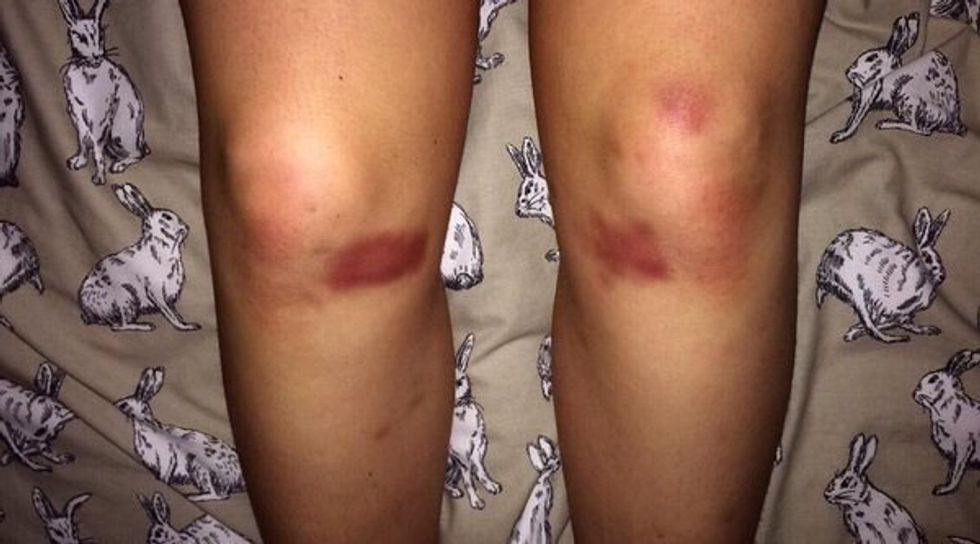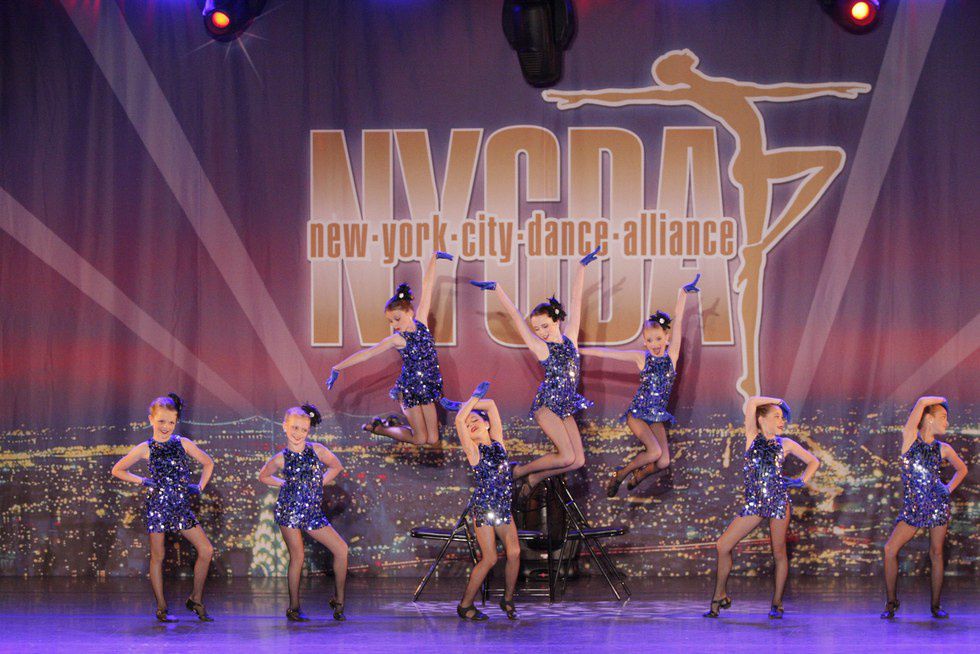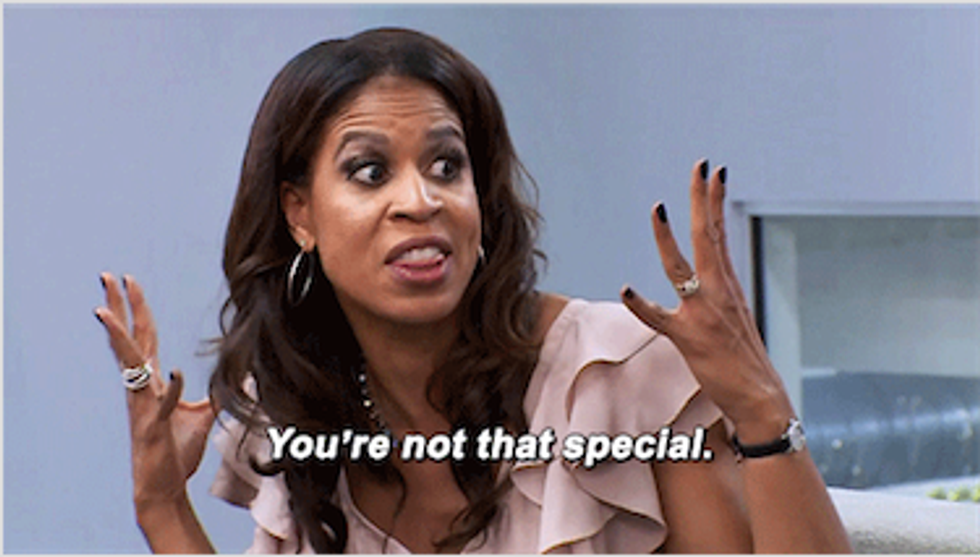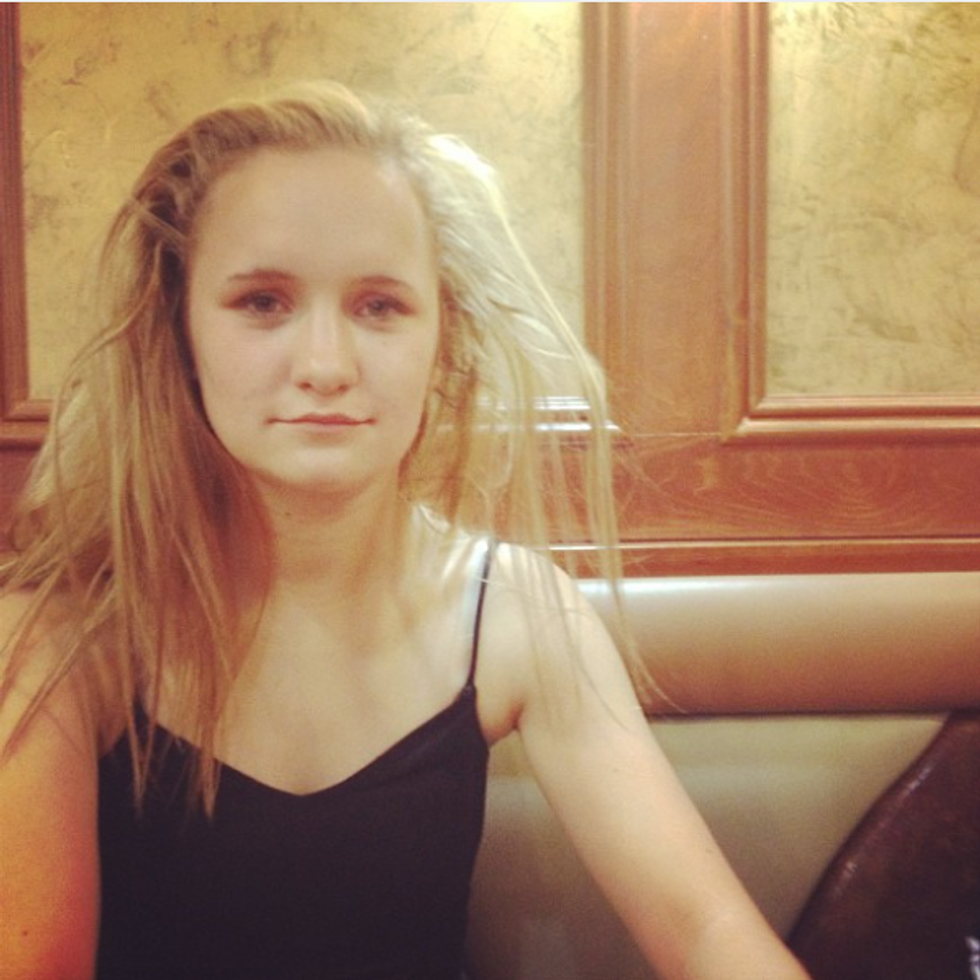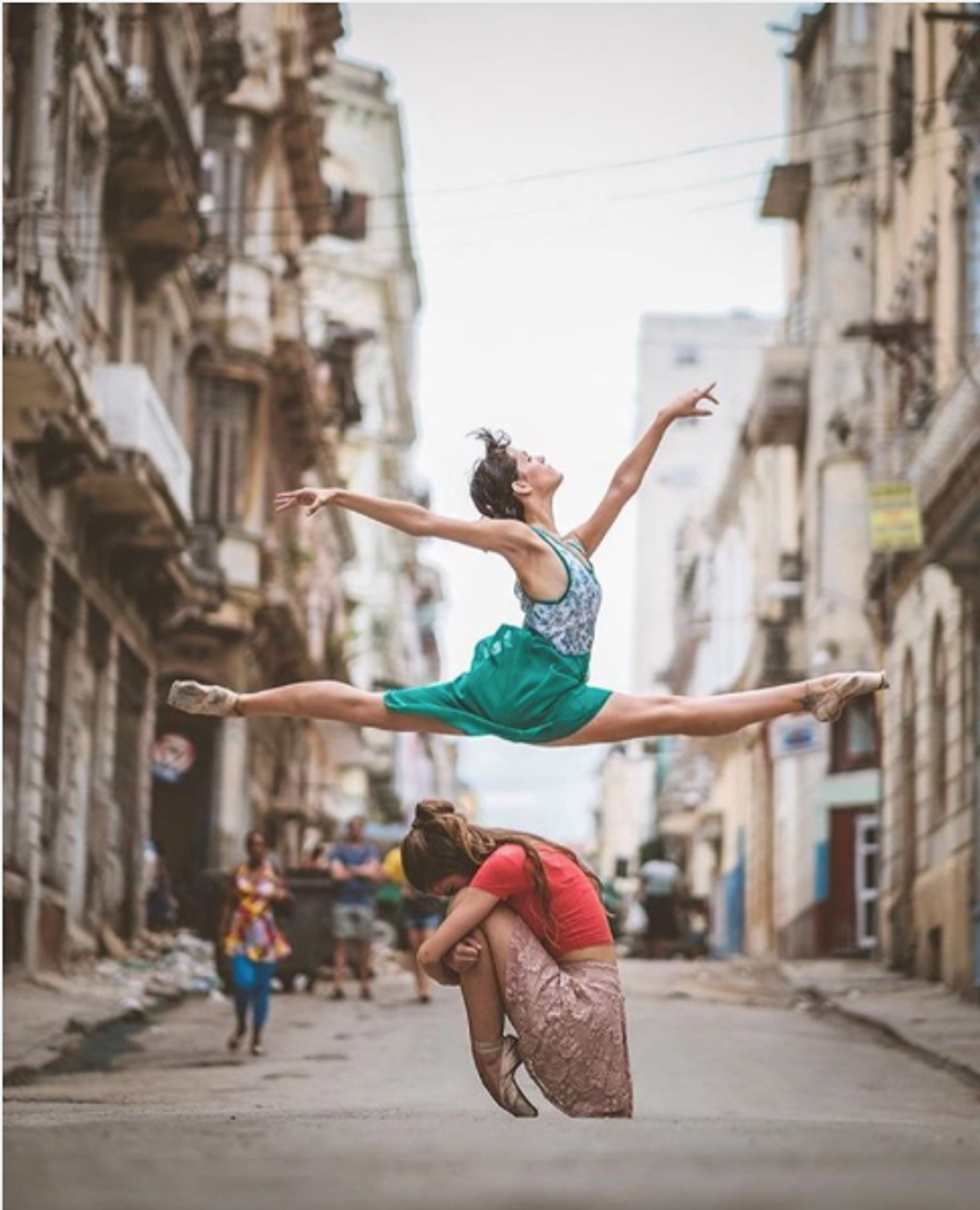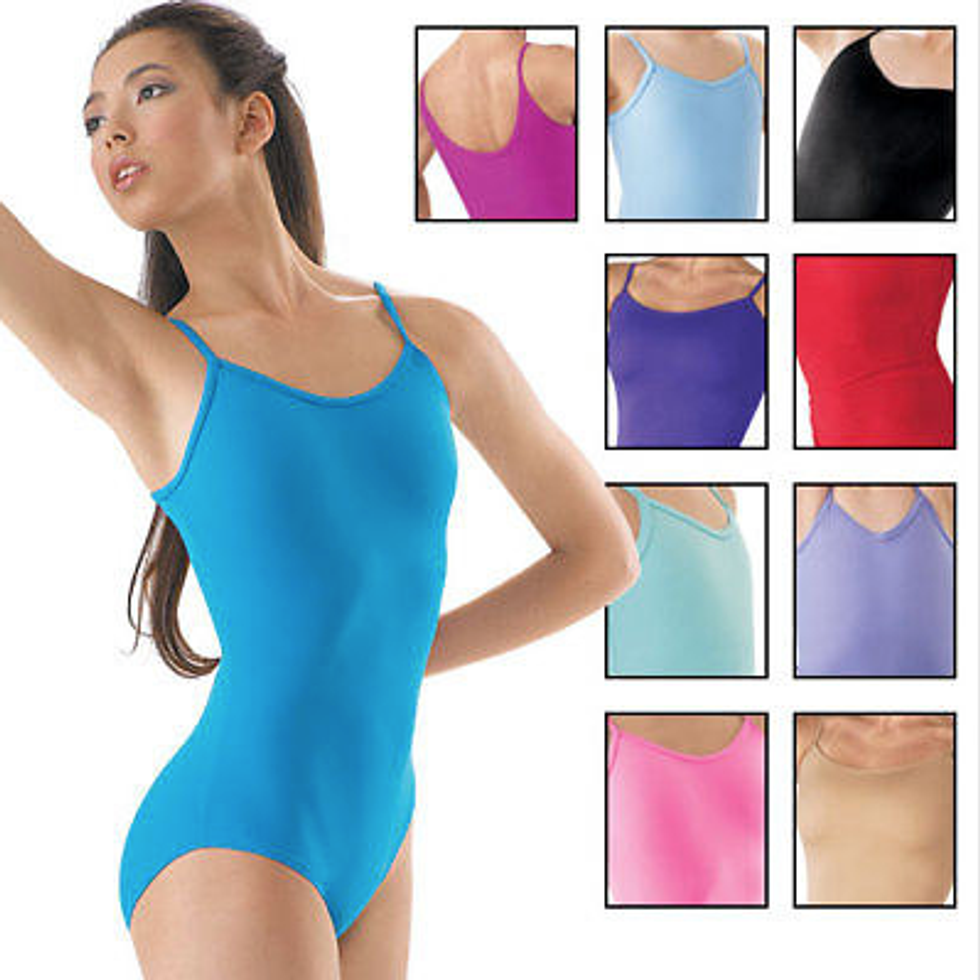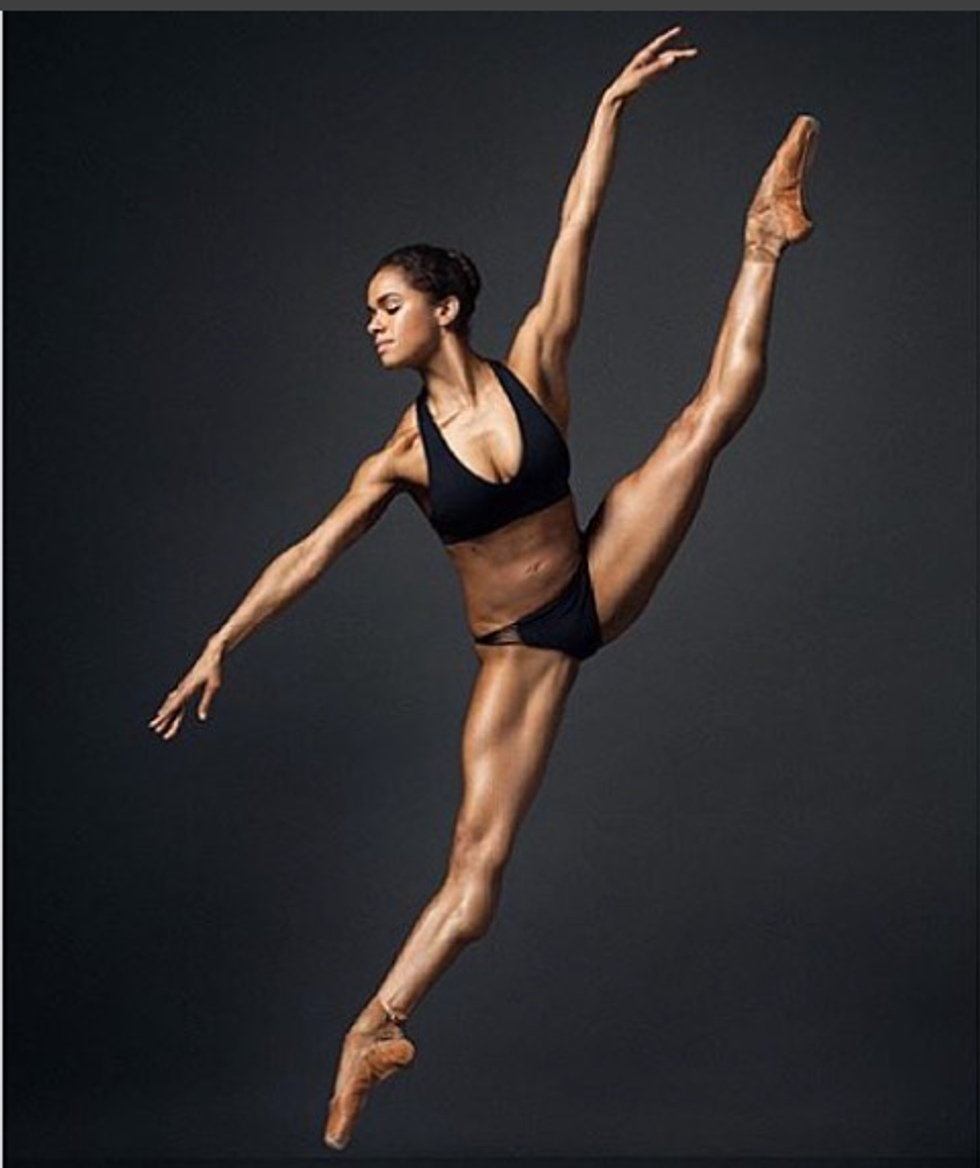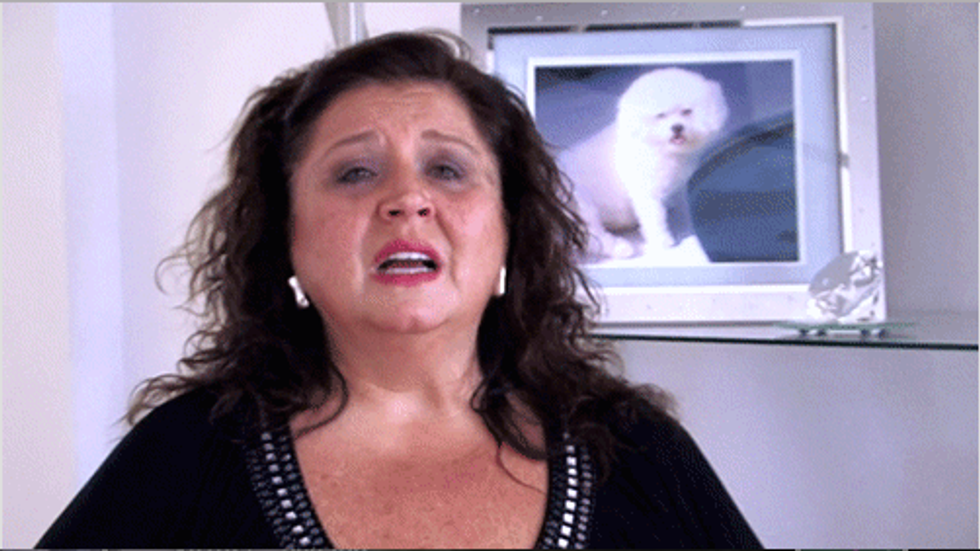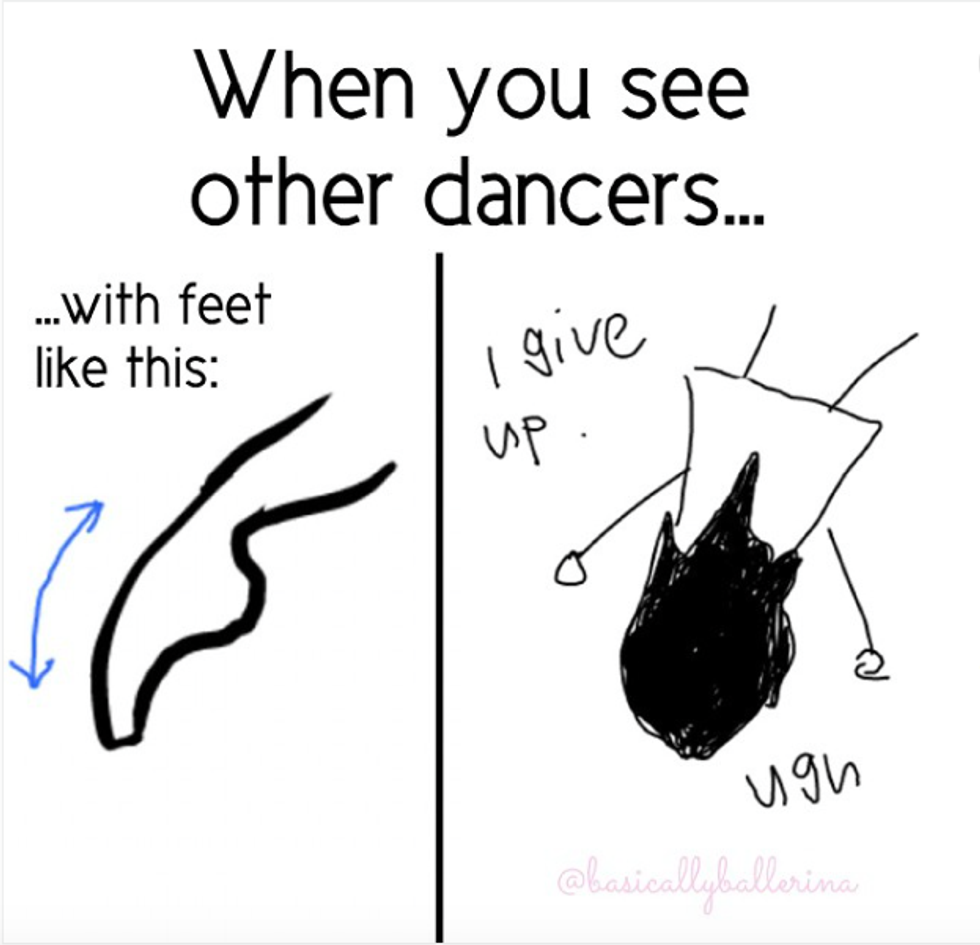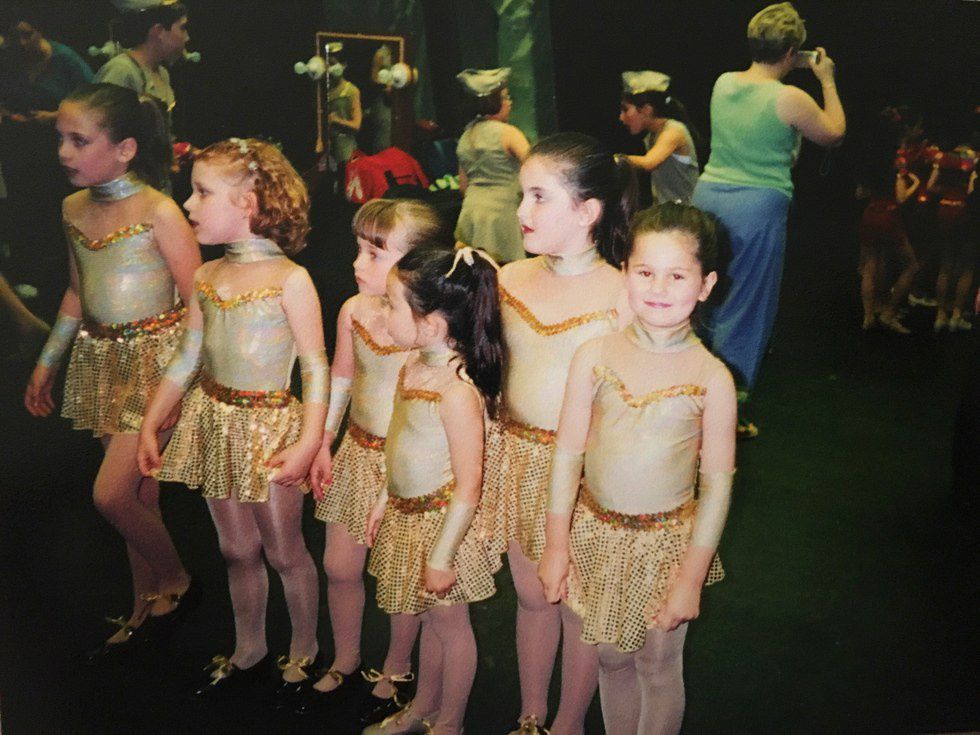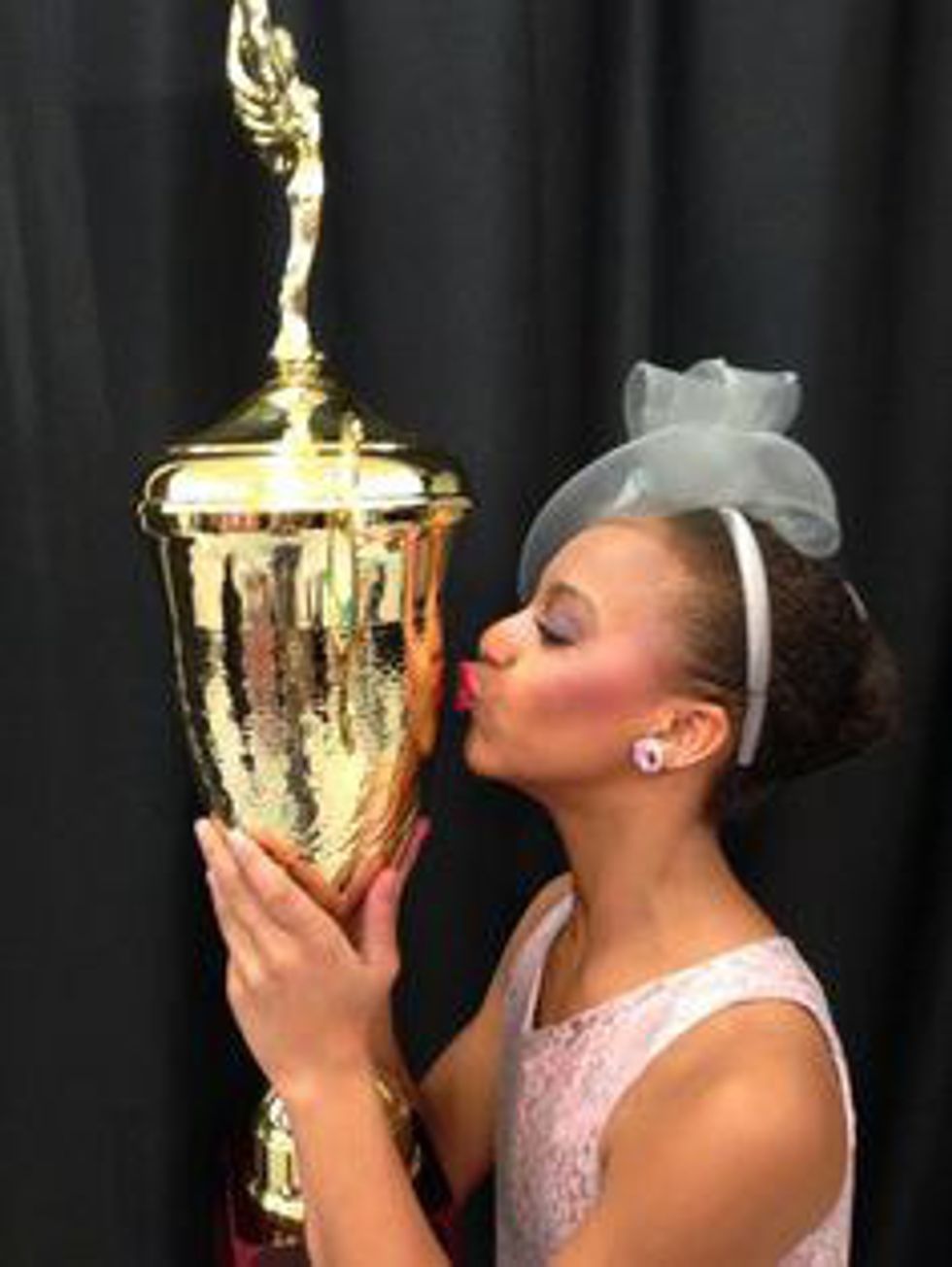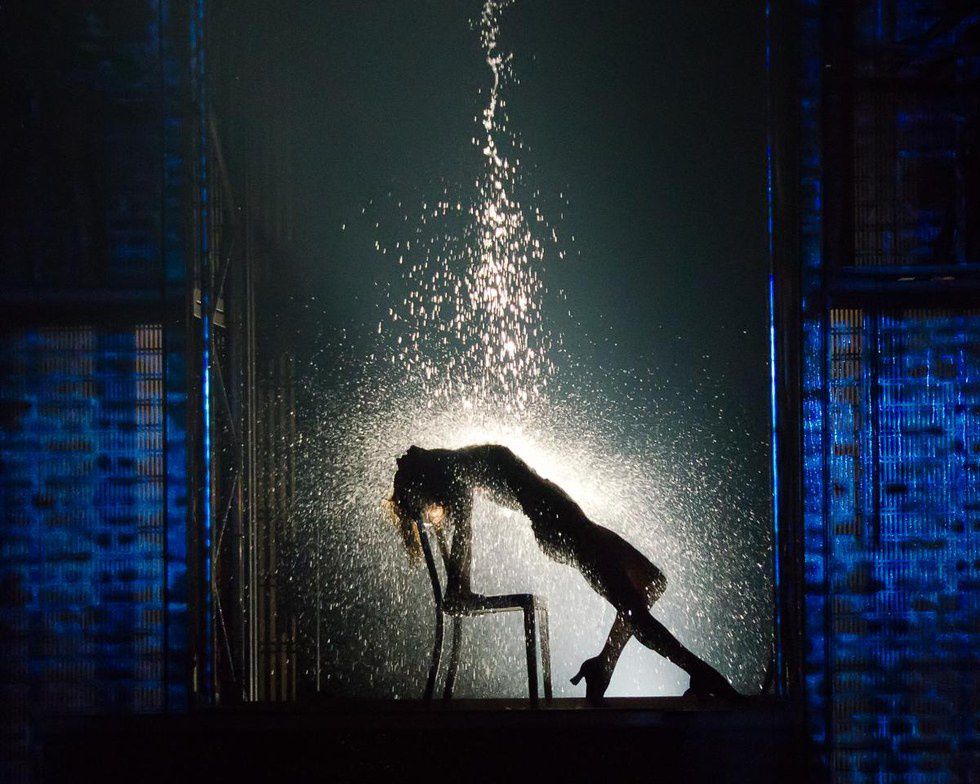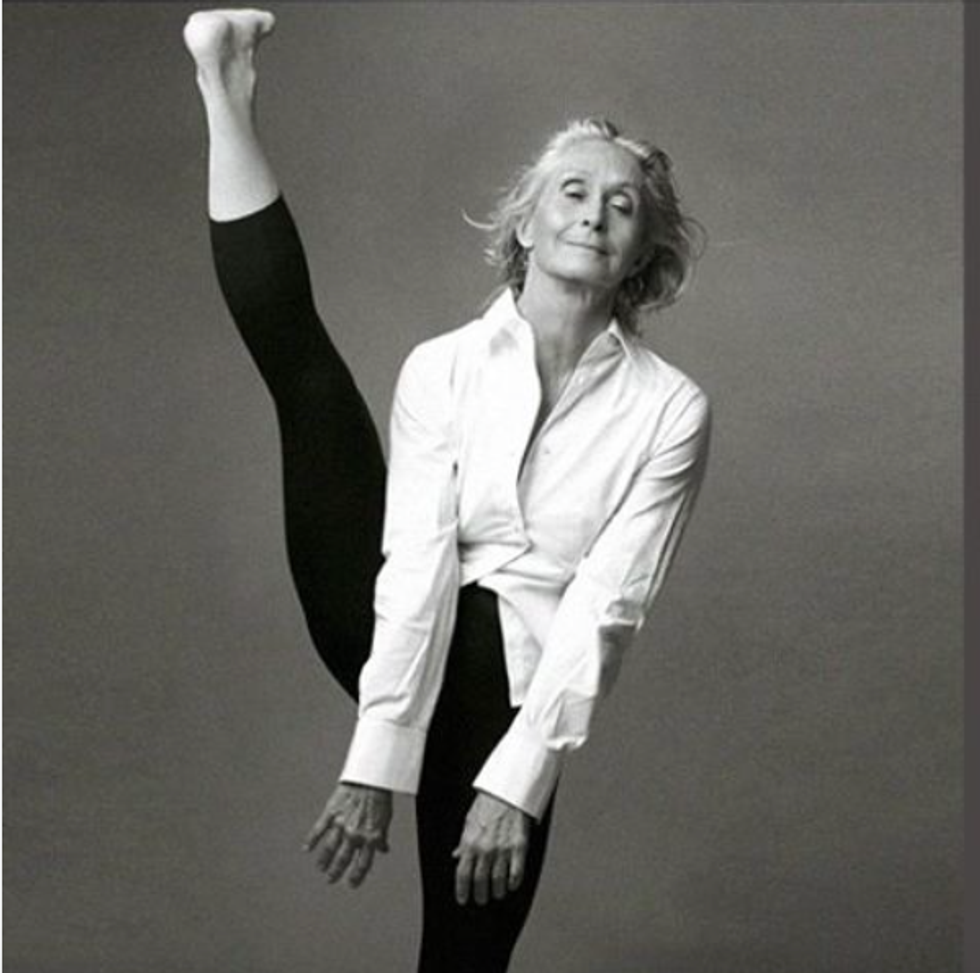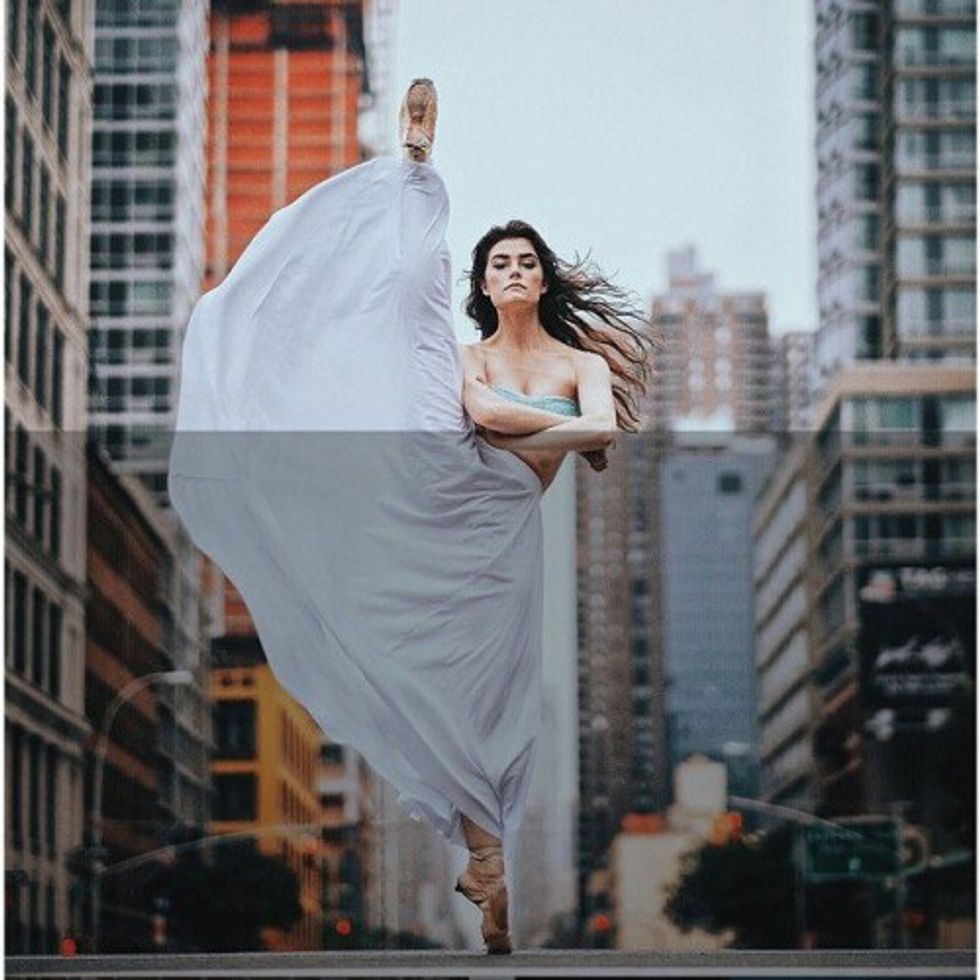Dancer [noun]: 1. A person who dances or whose profession is dancing. An artist who uses their body as their medium. 2. A state of being or necessity to life.
A is for Arabesque
Arabesque [noun]: A body position in which a dancer stands on one leg with the other leg turned out and extended behind the body, with both legs held straight.
B is for Bruises
Bruises [noun]: An injury appearing as an area of discolored skin on the body, caused by floor work or another impact rupturing underlying blood vessels.
C is for Competition
Competition [noun]: A sport in which competitors perform dances of varying styles (tap, jazz, ballet, lyrical) for a panel of judges.
D is for "Dance Moms"
Dance Moms [noun]: 1. The aggressive parents of dancers, similar to that of stage moms. These mothers are always ready to fight for their child/dance studio.
2. The television show with most intense and accurate depiction of dance moms.
E is for Extensions
Extensions [noun]: A body position in which one leg is lifted to the front, side, or back, while the other remains planted on the floor.F is for Fosse
Fosse [noun]: A type of dance style made popular by choreographer Bob Fosse, in which movements are sharp and isolated. Oftentimes, the feet are turned in.
G is for Grace
Grace [adjective]: A simple elegance or refinement of movement.
H is for Hairspray
Hairspray [noun]: 1. A liquid solution generally from an aerosol container that is used to hold hair in place.
2. A necessity.
I is for In Sync
In Sync [adjective]: A word used to describe two or more dancers who work well together. They are almost always in agreement.
J is for Jeté
Jeté [verb]: To jump from one foot to the other while gliding through the air.
K is for Kick
Kick [verb]: To forcefully thrust the leg into the air.
L is for Leotard
Leotard [noun]: 1. Form fitting and stretchy dance wear usually worn by ballerinas and other types of dancers.
2. Half of your wardrobe.
M is for Muscle
Muscle [noun]: The physical power or strength that is used to produce movement or hold body positions.
N is for Nerves
Nerves [noun]: 1. The state in which a person is agitated or worried.
2. A dancer's mental state before going onstage.
O is for Original
Original [adjective]: Created directly and personally by a particular artist for a specific medium or audience.
P is for Pointed Toes
Pointed Toes [noun]: The way to hold your feet unless you want to give your teacher an aneurysm.
Q is for Quiet Feet
Quiet Feet [noun]: The instruction given by your teacher when you sound like cows during across the floor.
R is for Recitals
Recital [noun]: 1. The show that you've been working towards for months.
2. Your time to shine.
S is for "So You Think You Can Dance"
"So You Think You Can Dance" [noun]: 1. A television show where dancers compete for the position of best dancer.
2. The words that go through your mind as you watch the show.
T is for Tap
Tap [noun]: The style of dance where syncopation and rhythm are key.
U is for Up to Tempo
Up to Tempo [adjective]: The phrase that means to dance faster, or to the tempo of the music.
V is for Vacation (Or The Lack Of One)
Vacation[noun]: 1. An extended period of recreation or the act of leaving something once previously occupied.2. What you don't get as a dancer.
W is for Win
Win [verb]: To be rewarded the highest award at a competition.
X is for (e)Xplosion
e(X)plosion [noun]: The sudden burst of energy and emotion the moment you step onstage.
Y is for the Years
Years [noun]: The length of time you've been proud to call yourself a dancer.
Z is for Zero Regrets
Zero Regrets [noun]: 1. No feelings of sadness or repentance with how you've spent your life.



